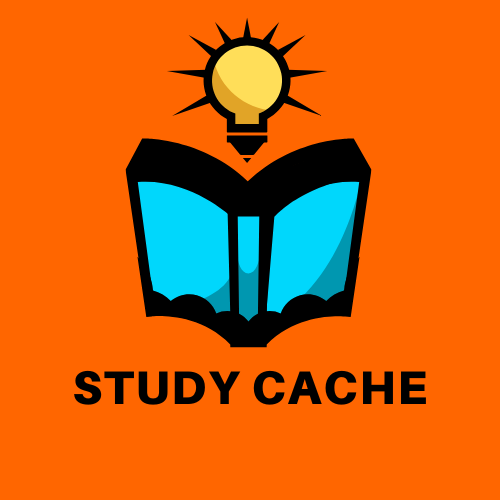1. Introduction: The Significance of Symbols in Human Culture
Symbols are universal tools that humans have used for millennia to communicate, represent ideas, and convey values. From ancient cave paintings to modern logos, symbols serve as visual shorthand for complex concepts. They are embedded in every civilization, acting as bridges across generations and cultures.
Throughout history, symbols have played a vital role in shaping collective identity, reinforcing societal norms, and expressing spiritual beliefs. They act as cultural anchors, helping communities understand their origins and aspirations. The progression from ancient to modern symbolic use reflects humanity’s evolving ways of understanding and engaging with the world.
2. The Evolution of Symbols: From Mythology to Modern Contexts
The origins of mythological symbols trace back to ancient civilizations where gods, creatures, and natural elements embodied human ideals and fears. For example, the thunderbolt of Zeus symbolized divine authority and power in Greek mythology. Over time, these symbols transitioned from religious artifacts to icons in art, literature, and media.
In contemporary settings, symbols have taken new forms—corporate logos, digital icons, and game imagery—yet often retain their core meanings. Cultural exchange has further enriched symbolic interpretations, blending elements from diverse traditions and creating layered, dynamic symbols that adapt to new contexts.
3. Mythological Symbols and Their Deep Cultural Roots
a. The Power of Gods and Mythic Figures as Archetypes
Mythological gods and heroes serve as archetypes—universal symbols that embody human virtues, vices, and societal roles. They act as mirrors reflecting collective hopes, fears, and values, providing a shared language for understanding human experience.
b. Example: Zeus as a Symbol of Authority and Power
Zeus, the king of Greek gods, symbolizes sovereignty, authority, and divine intervention. His thunderbolt represents unstoppable power, and his role as ruler reflects societal hierarchies and the importance of justice. These attributes have made Zeus a lasting emblem of leadership and strength.
c. The Narrative of Zeus as an Impostor and Its Modern Implications
Mythological stories often depict Zeus as a trickster who steals thunder and defies primordial order, symbolizing rebellion and chaos. This narrative underscores the dynamic nature of power—its acquisition, challenge, and redistribution—paralleling modern discussions about authority and legitimacy.
4. Trickster Symbols in Mythology and Folklore
a. The Concept of the Trickster Figure
Trickster figures are complex archetypes that embody creation, chaos, humor, and critique. They often serve as cultural mirrors, challenging norms and prompting reflection on moral values and social structures.
b. Case Study: Coyote in Native American Tales
Coyote is a quintessential trickster, representing both cleverness and folly. In Native American folklore, Coyote’s antics teach lessons about humility, ingenuity, and the unpredictable nature of life. His stories highlight the duality of intelligence and foolishness, enriching moral lessons with humor and complexity.
c. How Trickster Symbols Challenge and Enrich Moral and Social Lessons
Trickster symbols challenge rigid moral codes by demonstrating that wisdom can come from unexpected sources. They encourage adaptability and critical thinking, making them vital in cultural narratives that evolve over time.
5. Symbols in Modern Rewards and Gaming: Bridging Ancient Wisdom and Contemporary Engagement
Symbols are central to modern gaming and reward systems, serving to evoke emotion, recognition, and motivation. Visual cues like icons and motifs tap into deep-seated cultural associations, enhancing player engagement and immersion.
For example, in contemporary slot games, symbols like the four-leaf clover function as multipliers or luck indicators, drawing from centuries-old cultural beliefs. Similarly, narrative-driven games incorporate mythological themes to deepen storytelling and player connection.
A notable illustration is Le Zeus gameplay analysis, which demonstrates how mythological symbols are integrated into game design to create a compelling and culturally resonant experience.
| Symbol | Cultural Origin | Modern Use |
|---|---|---|
| Four-Leaf Clover | Irish Folklore | Luck multiplier in games |
| Thunderbolt | Greek Mythology | Power and authority icons |
6. The Psychological Power of Symbols in Perception and Behavior
Symbols influence subconscious biases, shaping perceptions and decisions without conscious awareness. Familiar symbols activate neural pathways associated with trust, excitement, and positive reinforcement, which are crucial in marketing and gaming environments.
For instance, the four-leaf clover’s association with luck can subconsciously boost players’ confidence, increasing engagement and persistence. This psychological impact underscores the importance of culturally resonant symbols in designing experiences that motivate and retain users.
7. Deepening the Understanding: Non-Obvious Aspects of Symbols
a. Symbols as Carriers of Cultural Memory
Beyond their immediate visual appeal, symbols serve as repositories of collective memory, encapsulating histories, beliefs, and societal shifts. They evolve as cultures reinterpret their meanings, maintaining relevance across generations.
b. The Ambiguity and Evolution of Symbols
Many symbols are inherently ambiguous, allowing for multiple interpretations. This fluidity enables cultures to adapt symbols to new contexts, such as transforming mythological figures into icons for modern entertainment or branding.
c. Reinterpretation: From Myth to Modern Rewards
The transition from mythological stories to modern reward systems exemplifies reinterpretation. Symbols like Zeus’s thunderbolt now appear in digital games, retaining their association with power while serving entertainment purposes.
8. Case Study: Le Zeus and the Modern Use of Mythological Symbols
a. Incorporation of Mythological Themes and Symbols
Le Zeus exemplifies how timeless mythological themes can be woven into contemporary gaming to enhance narrative depth and emotional engagement. By integrating symbols like thunderbolts and divine authority, the game creates a bridge between ancient stories and modern entertainment.
b. The Narrative of Zeus as an Impostor and Its Significance
The story of Zeus as an impostor who steals thunder highlights themes of rebellion and the fluidity of power. In gaming, this narrative motif can symbolize challenge, unpredictability, and cunning—elements that captivate players and deepen engagement.
c. The Interplay Between Mythological Symbolism and Player Engagement
By embedding mythological symbols within game mechanics and storytelling, developers foster a sense of familiarity and cultural resonance. This approach enhances immersion and encourages players to explore the symbolic layers beneath the gameplay, enriching their experience.
9. The Future of Symbols: Trends and Innovations
a. Digital and Augmented Reality Adaptations
Emerging technologies like virtual and augmented reality are transforming how symbols are experienced. Immersive environments can present symbols in new dimensions, allowing users to interact with them more deeply—blurring the lines between myth and reality.
b. New Symbolic Systems in Virtual Environments
Future digital ecosystems may develop entirely new symbolic languages, tailored for virtual spaces where traditional cues are redefined. These systems could include dynamic symbols that adapt to user behavior, creating personalized cultural narratives.
c. Ethical Considerations and Cultural Sensitivity
As symbols evolve in digital contexts, ethical issues emerge—particularly regarding cultural appropriation and misrepresentation. Responsible design requires awareness of cultural significance and the potential impact of symbolic reinterpretation.
10. Conclusion: Unlocking the Power of Symbols for Cultural and Personal Growth
From the mythic gods of antiquity to the icons in today’s digital games, symbols remain fundamental to human experience. They serve as bridges connecting past and present, tradition and innovation. Recognizing their power can foster greater cultural understanding and personal insight.
“Symbols are the language of the subconscious, shaping perceptions and guiding behaviors across generations.” – Anonymous
Engaging mindfully with symbols—whether in art, storytelling, or gaming—can enhance cultural literacy and personal growth. As technology advances, the potential for innovative symbolic systems grows, promising an exciting future where ancient wisdom continues to inspire new forms of expression.

